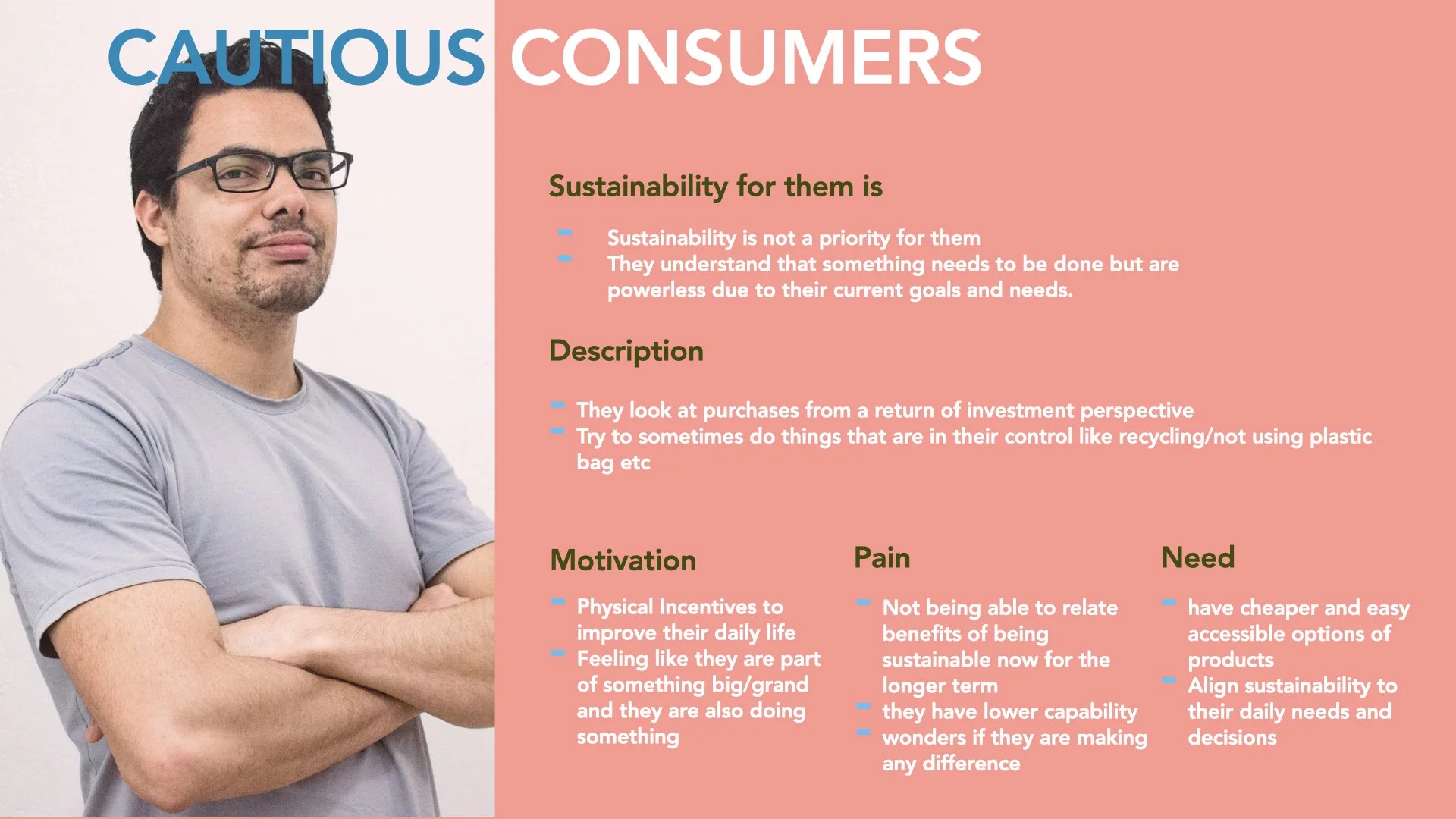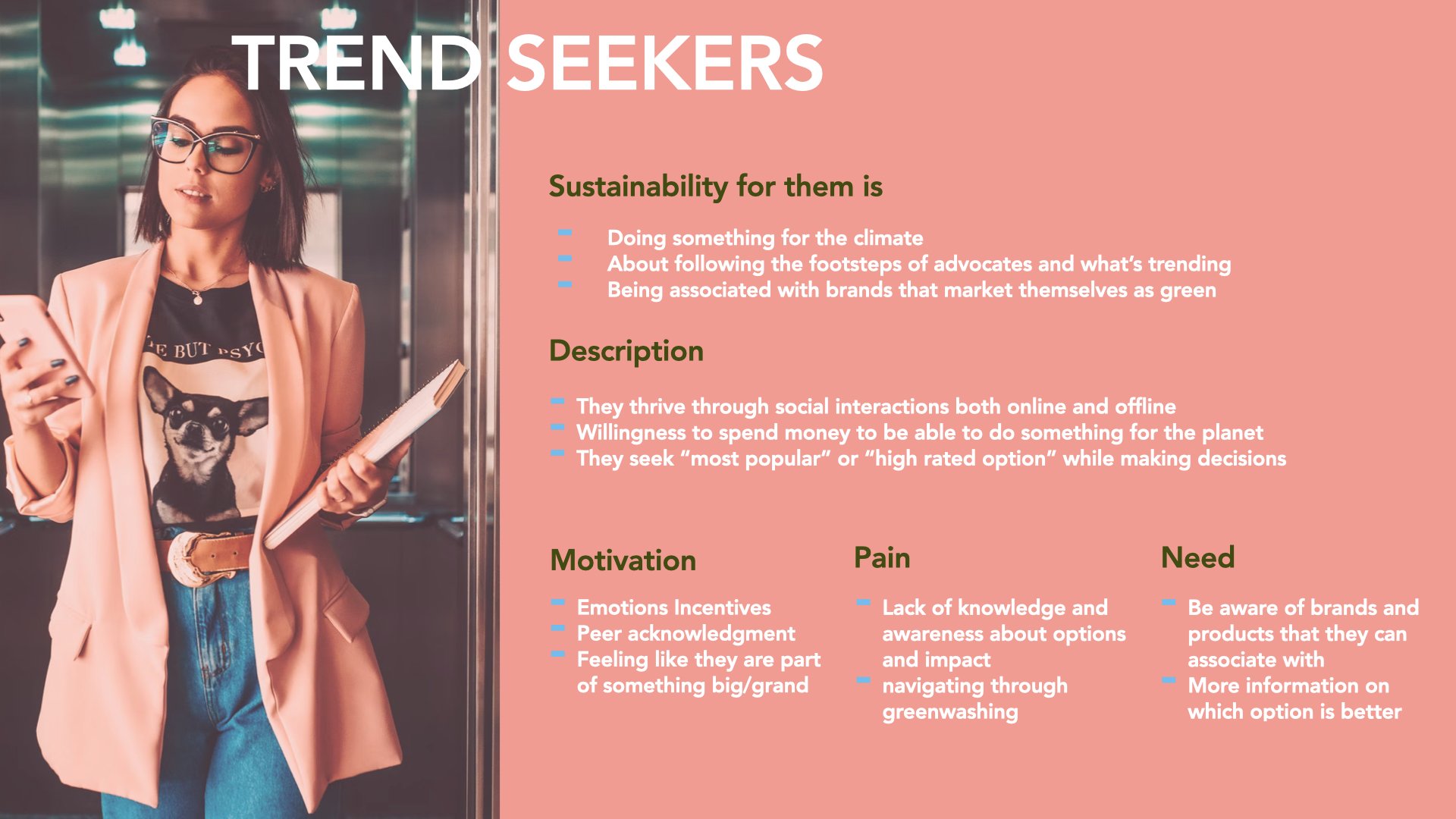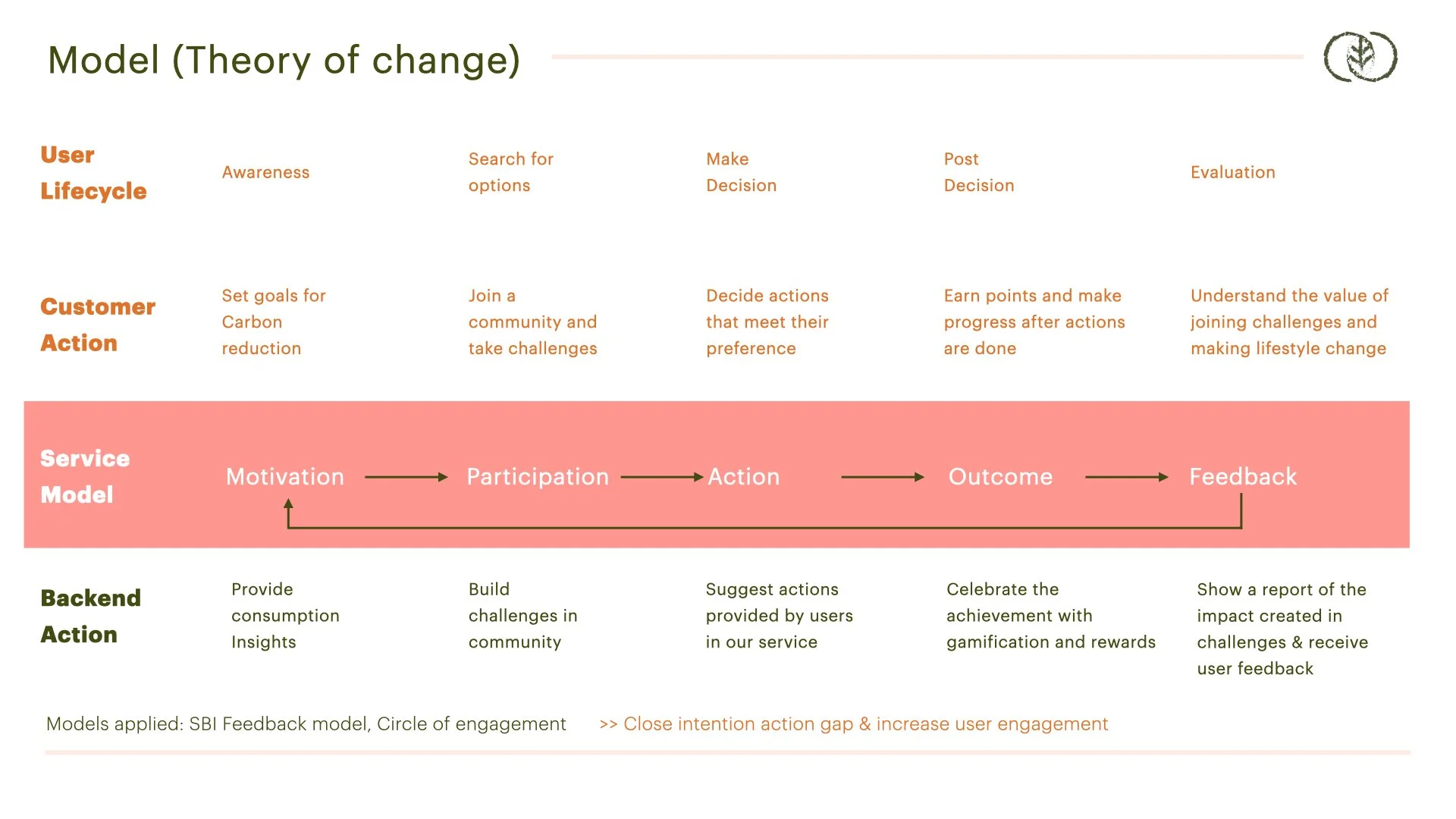Cahoo - A model to engage consumers towards sustainable actions
Our Collaborations:
This is a student project at the Royal College of Art, Service Design Department. During the Span of the project, we collaborated with Kam Channa, Head of financial services at Royal College of Art, to build a model that help consumers take more sustainable actions in daily life.
Our Brief:
Consumer behavior is driving towards sustainability, and consumers are consciously choosing to relate to brands that match the same values and they want businesses to help them to adapt. How might we help consumers drive sustainable actions while using the financial services infrastructure?
Our Solution:
Cahoo is a sustainable lifestyle model that enables you to take actions that are relevant to your lifestyle to reduce your footprint, while also learning and sharing experiences in your community and combining forces towards climate change.
Desk Research
Our early study led us to the behavioral science hypothesis of the intention action gap, which has been supported by studies from companies such as IBM and Visa. The disparity between intended and actual behavior is known as the intention-action gap. In this scenario, having the best of intentions to live a "greener," more sustainable lifestyle is just a deterrent. When a quantitative analysis was conducted, it was shown that a gap occurs for every one in three individuals in the United Kingdom.
Primary Research
We interviewed 16 people from various backgrounds over the course of three days to hear about their thoughts on sustainability. Consumers who actively engaged in sustainable initiatives reported that they were concerned about climate change, which motivated them to act. They took action after learning about it online or via a friend or family member. The aftermath of usually doing the action was said to be emotionally rewarding.
Consumers' mindsets against not taking action were influenced by their belief that sustainability is difficult and unrelated to daily life, as their top priority in life were to achieve their present goals, wants, and desires. Even if they intended to accomplish anything, comfort, ease, and accessibility typically got in the way. They were also concerned about whether or not their actions made a difference.
Consumer Persona



Problem Definition
How might we, empower consumers to learn, act and share about reducing impact with their community so as to develop better consumption habits in the longer term?
Talking to Experts
We conducted a provocation workshop with industry experts to get thoughts from experts in the industry regarding our project direction. We received immense value feedback and was a great learning for us and it made us this think beyond the surface. The experts validated our thinking by their thoughts.
Testing our Initial Ideas
We separated our ideas into six categories and put them to the test with our consumers. Three of these stood out and were the foundations of our final solution.
The first is one of sharing experiences. We discovered that users wanted to engage with other people's experiences since it gave them confidence and trust in undertaking a given activity.
The second is visualising impact. Scaling and visualising micro actions may make users' efforts more concrete, and if they can follow the changes and regularly and periodically see the impact of their adjustments, it functions as motivation to continue doing so.
Finally, we discovered that incentives were critical in the early phases since they provided motivation to continue doing something because it seemed instantly satisfying. As a result, it serves as an extra motivator for making green decisions in everyday life.
Solution: Cahoo - For me, my community and my planet
Cahoo is a sustainability action model that integrates behaviour science principles, the SBI Feedback Model (Situation, Behaviour, Impact), and the circle of engagement model to produce a new model that promotes social learning and impact. It encourages engagement, motivates customers to take action, and offers feedback on the outcome to create a circular loop. It enables users to build a community-led marketplace of sustainable actions and businesses in order to learn and grow as a group. Cahoo also engages its users using gamification principles such as challenges, badges, and incentives.


How does Cahoo benefit its stakeholders:
Users
Helps to track and integrate sustainable actions in daily life
Motivates and pushes you to adapt to change through actions
Makes users feel they are not alone and their actions and effort count.
Business:
Increased engagement within their user and community
Adapting to what’s needed in the current time towards sustainability and building a competitive edge.
Measuring real actions and real changes to stand out within the new generation of users.
Planet:
Shorting the gap between intention and action
With more actions, reduce consumption of resources
Design Principles
Our design methods are based on four major principals:
We aim to foster experience sharing and utilise community belonging to take more actions from and for the community.
Personalization was critical because if sustainability is to become a part of our lives, it must be blended with our present ways of life.
There is no such thing as a good or bad action; everything that helps you lessen your influence on the environment is essential.
Make the experience enjoyable and joyous; people are already concerned about climate change; we want to give them hope and encourage them to enjoy the path of decreasing their effect.
Cahoo Application
Step 1 - Insights and goal setting
The app integrates open banking technologies to produce tailored insights for consumers, allowing them to place themselves on a scale in comparison to others in their local community. It also assists users in developing goals that serve as a steppingstone for integrating into a sustainable lifestyle.
Step 2 - Challenges
Participating in community challenges motivates users and can push others to perform more activities. We think that by working together, we can effect change and create a better world. We can monitor and track progress together by scaling and grouping individual micro-actions.
Step 3 - Nearby Actions
Users may identify activities near them depending on their location by inputting their wants and preferences based on comfort, convenience, and accessibility to find actions and brands that aid in the sustainable decision-making process.
Step 4 - Feedback and report
We want Cahoo to be simple and enjoyable! Completing activities will allow you to advance through challenges, and completing challenges will help you achieve your goals. It generates reports for users on a regular basis, allowing them to measure their progress and making it more and more feasible and challenging at each step.
Cahoo in Detail
Cahoo would require collaboration with a variety of organisations in order to function properly and efficiently. To make open banking available, for example, we would need to collaborate with firms like Plaid for permission online and utilise their platforms to collect data and follow rules as needed. One of the key features of the app is that it has advocates who create tasks for others to complete. The service would have to reach out to them and motivate and empower them to take on new tasks.
There are very few applications available for consumers to utilise, but Cahoo stands out since it delivers social learning and helps you in taking activities with your community while also being personalised and giving data-driven insights.
Cahoo may enter the market in two ways. First, it works directly with users and is offered as a free app in the market, earning its renewal from companies and businesses approved by ethical and ecological organisations. Second, cahoo may be utilised by banks and organisations to get a competitive edge in a changing world where customers place a larger value on sustainability and make income through premium and monthly subscriptions based on users.
Cahoo is still in work in progress and is in the testing and development phase. Please reach out if you have any suggestions or feedback!
TEAM MEMBERS:
Chin-Cheng Ou | Priyanjali Rane









